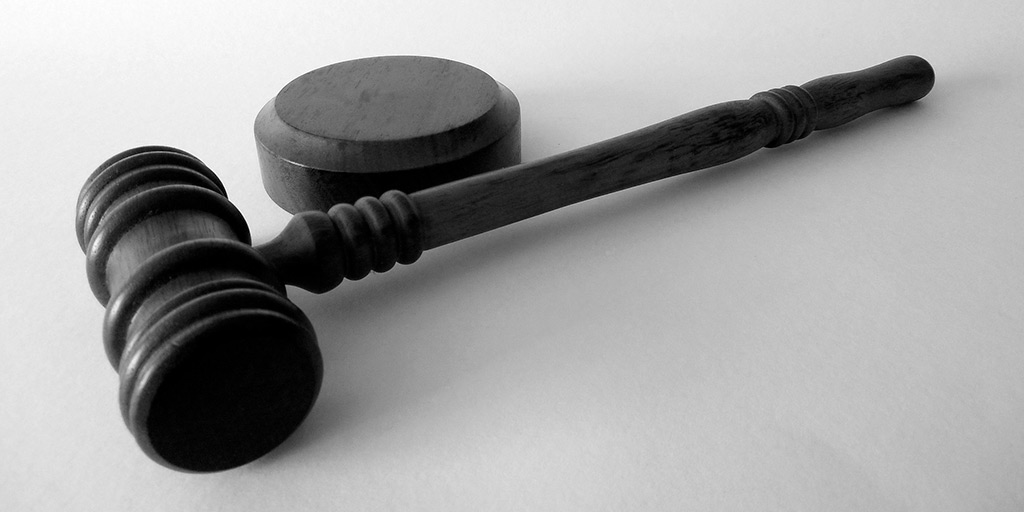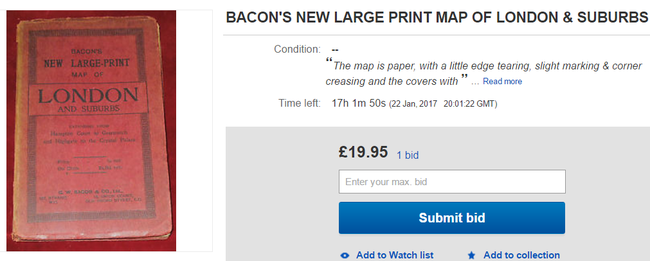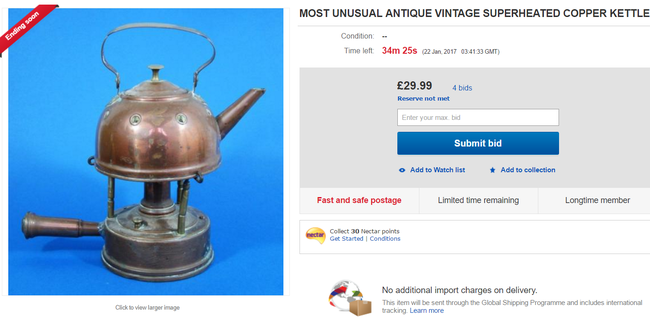
It’s a perennial question for eBay sellers: should I go for a fixed-price listing or auction?
As sellers, we all want to get the best price, but there is a lot of conflicting data about exactly what that entails. Some people swear by auction, others will always go for fixed-price.
You might suspect that preference can depend on what your are actually selling and yes, this is often the case. You might even need to do a few test rounds to see what works well for your particular products.
In the meantime, it helps to have a view of the relative strengths and weaknesses of each option and who is using them; which will be better for your shop?
Auction Pros and Cons
The basics of the auction are the same as any other live auction you might see; you offer your product up for potential buyers to bid against each other. You set a reserve price, and anything below that price results in a non-sale of the item. On eBay, you also have the option of a “Buy Now” price where the buyer will click the button and buy the product at a fixed price.
Auction listings may remain for up to 10 days and the final value fees are calculated the same way as for fixed-price listings. You may be able to get a refund of insertion fees on auction listings, too.
The major pro of an auction listing is that you can potentially reach a much higher price than what you originally expected. In general, most auctions that start with a low opening bid will sell, although the flipside is that you may end up selling well below the true market value of your product.
 Auctions are also great if you’re unsure what the price should be on an item. This way, you let the market decide what the value should be and it can give you some good data going forward for pricing. They can also prove to be a good way to shift any stock you haven’t been able to move, even if you do end up taking a bit of a hit on price.
Auctions are also great if you’re unsure what the price should be on an item. This way, you let the market decide what the value should be and it can give you some good data going forward for pricing. They can also prove to be a good way to shift any stock you haven’t been able to move, even if you do end up taking a bit of a hit on price.
One of the challenging features of auctions is that they take a bit more planning if you want to develop any kind of good business plan. You need to research strategy and look into factors, such as the timing of when the auction finishes. There are certain times where buyers are more likely to be around.
Another factor to consider is that auctions lack the means to protect yourself against non-paying bidders ahead of time. With fixed-price listings, a buyer pays upon accepting the fixed price, whereas with auctions, you may strike people who drive up the price, win the auction, and then don’t pay. While you obviously don’t have to release the product to them, you now have to go through the hassle of re-listing the product.
Fixed Price Pros and Cons
Fixed-price listings are just as they sound – you list your product for sale and put a fixed price on it. Buyers may choose to contact you and negotiate the price and listings can be on eBay for up to 30 days or “Good till Cancelled”, meaning the listing renews after 30 days.
The first, and probably most obvious, advantage of fixed pricing is that you won’t end up disappointed by the sale price. The downside of that is that you need to know your product and its market to understand what a reasonable price might be. There are still plenty of items at fixed price going for well below market values.
Another pro of fixed-price listings is that you will be paid right away – no waiting for an auction winner to pay up. On the other hand, fixed-price listings may languish unsold for longer periods of time than an auction that starts with a low opening bid.
You should also note that recently, eBay has been moving away from an auction model to more fixed-priced listings. There is strong suggestion that consumers are looking for a quick, fixed-price experience, much like they get from competitors, such as Amazon.
Which Works Best?
Whether auction or fixed price is better for you is going to come down to a few factors:
- The items you sell.
- Your tolerance of pricing risk.
- How quickly you need products sold.
Let’s say you’ve got old stock that you need to sell quickly, or that your store is relatively new and hasn’t had very much exposure. Selling off stock at auction can be a fantastic way to not only sell it relatively quickly, but to get some needed exposure for your store.
Another possibility for auction being the better option is where you have an item that is in hot demand and you want to be able to maximize the price you get for it. A good example of this came with the Christmas 2016 trend for Hatchimals toys. A story emerged of two brothers in Arizona who brought up a number of the toys then sold them at considerable profits by auctioning them on eBay.
Rare items, such as antiques or collectibles, may also be better off at auction if you want to maximize your price. The caution here is that items like these tend to fluctuate all the time, so you need to be doing your research about what people are looking for and the prices items like yours tend to be selling at.
On the other hand, when should you prefer fixed price? Firstly and most obviously, when you actually need to get a certain price on an item, or if you regularly sell the same stock and need consistent pricing. If you need an exact pricing plan and can’t tolerate the risk of auction, then fixed price is for you.
Secondly, a fixed-price listing may be a better idea for you if you want a certain level of pricing and don’t really mind if it takes longer for your product to sell. If you can afford to wait for the right buyer to come along, you can avoid the snap-pricing of an auction.
Lastly, if you sell products that represent a steady demand and would like to build up your business profile over time, fixed price might be better because you can focus on creating good experiences for those buyers who are more interested in a quick sale rather than having to compete at auction. There are plenty of buyers (some suggestion is they are a majority now), who would rather find what they need then proceed with a quick sale rather than deal hunting and spending a lot of time bidding on items.

Your Shop…
Of course, you may like to experiment between fixed-price listings and auctions to see what tends to work best for your shop, but overall you should consider the criteria laid out here.
What products do you sell and how much demand is there for them? How tolerant are you of risk in your pricing? How quickly do you need to sell the products?
We’d love to hear from you – what have your experiences been between the two pricing strategies? Are there any lessons you would share?









Be the first to leave a comment. Don’t be shy.